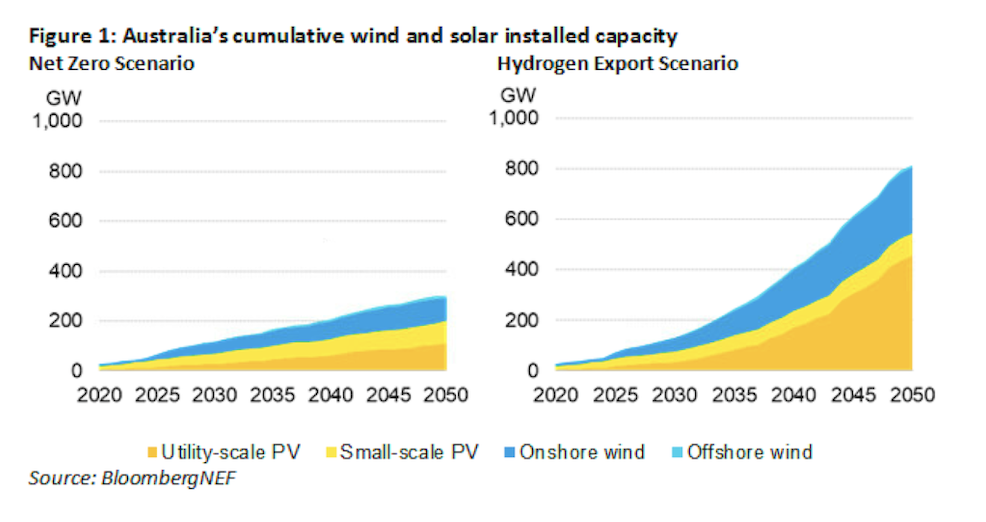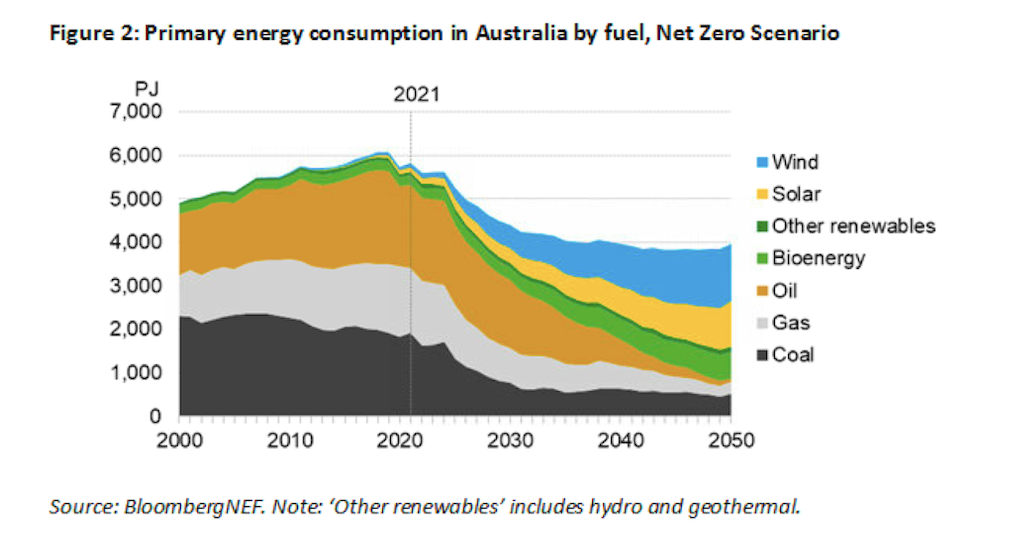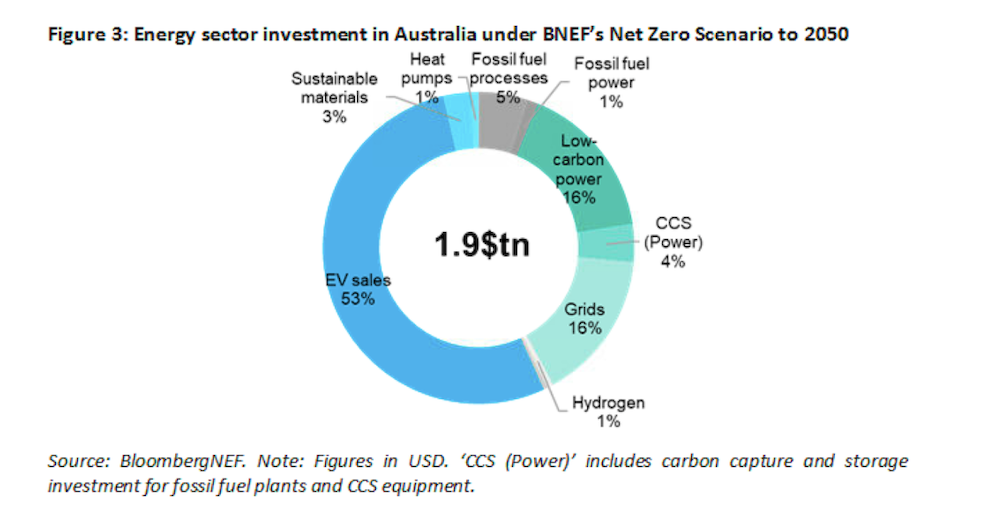Bloomberg New Energy Finance, or BNEF, has modelled scenarios for Australia’s energy future in its New Energy Outlook: Australia report, including a net zero and hydrogen export pathway. The company concluded that before 2050, over USD 1.9 trillion ($2.89 trillion) will need to be invested for the country to reach its targets, 95% of which will flow towards clean energy technologies and supportive infrastructure.

Net Zero Scenario
In the Net Zero Scenario, Australia’s wind and solar installations would reach 300 GW by 2050, more than a seven-fold increase from the 39 GW installed by 2022. Solar will be the main generator, BNEF says, accounting for 201 GW alone, which the company says would be split between rooftop and utility-scale projects (much in the way it is today).
In this scenario, investment in Australia’s generation fleet would need to be more than $413 billion by 2050, with 57% expected to flow into wind and solar assets. Interestingly, it found $11 billion needs to be spent yearly on Australia’s grid – a far higher figure than the current spend.

Hydrogen Export
This scenario is where the numbers become truly mind-boggling, with BNEF concluding the investment required rockets to $739 billion by 2050 on this path.
This is because becoming a hydrogen exporter would require Australia’s electricity generation to grow to 1,963 TWh by 2050, seven times more than today. “This electricity demand would be 169% more than in the Net Zero Scenario,” BNEF says.
“To supply this demand on a least-cost basis, wind and solar capacity across the country would need to grow to 812 GW by 2050, 21 times more than today.”
If Australia could realise this, it would be capable of supplying 6%, or 28 million metric tonnes per year, of the expected global low-carbon hydrogen demand in 2050.
“Hydrogen will play a pivotal role in Australia’s own decarbonisation ambitions as well as green export ambitions,” BNEF Australia Energy Transition Analyst, Sahaj Sood, said. “However, a lack of concrete clean hydrogen import demand together with significant transportation challenges stand in the way of Australia’s hydrogen export ambitions.”
This content is protected by copyright and may not be reused. If you want to cooperate with us and would like to reuse some of our content, please contact: editors@pv-magazine.com.









By submitting this form you agree to pv magazine using your data for the purposes of publishing your comment.
Your personal data will only be disclosed or otherwise transmitted to third parties for the purposes of spam filtering or if this is necessary for technical maintenance of the website. Any other transfer to third parties will not take place unless this is justified on the basis of applicable data protection regulations or if pv magazine is legally obliged to do so.
You may revoke this consent at any time with effect for the future, in which case your personal data will be deleted immediately. Otherwise, your data will be deleted if pv magazine has processed your request or the purpose of data storage is fulfilled.
Further information on data privacy can be found in our Data Protection Policy.